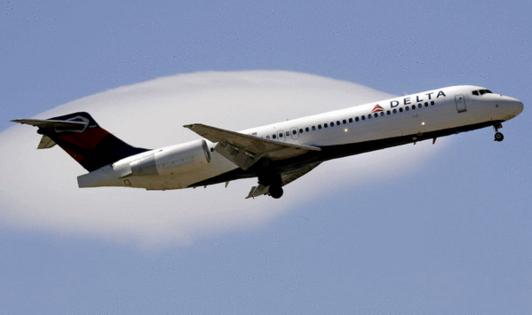Dozens injured as Delta flight hits turbulence at 37,000 feet, diverts to Twin Cities
Published in News & Features
MINNEAPOLIS — A Delta flight heading from Salt Lake City to Amsterdam encountered “significant” turbulence after take off Wednesday, sending beverage carts and other items flying through the cabin and leaving at least 25 people hurt.
Nine of the injured were taken to Hennepin Healthcare in downtown Minneapolis after the Airbus A330-900 diverted to the Twin Cities and landed safely at the Minneapolis-St. Paul International Airport, according to hospital spokeswoman Christine Hill.
The victims were treated and released, she said.
The MSP Airport Fire Department and paramedics were on hand to evaluate the initial medical needs of passengers and crew members, according to the Metropolitan Airports Commission.
Delta Flight 56 had been in the air about 40 minutes and climbed to 37,000 feet where it met turbulence the airline described as “significant.” The plane reached a maximum altitude of 38,075 at 5:23 p.m., before nosediving about 1,300 feet in two minutes. The aircraft returned to 37,000 and continued on to Minneapolis, according to Flightradar24.com. a flight tracking website.
Passenger Nick-Taylor Jensen was on the flight, headed home to Aarhus, Denmark, after being gone for work for a week. He said seat belt signs were off, people were in the aisle and flight attendants were serving drinks. Then all of a sudden, the jetliner hit “extreme turbulence,” Jensen said.
“A man five rows in front of me flew out of his seat and hit the ceiling,” Jensen told the Star Tribune. “The side-to-side and up-and-down jostling was not normal turbulence. The noise of the plane and extreme rushing air was unlike anything I’ve heard on a flight.”
Jensen, who has flown about 200 times in his life, said flight attendants were in shock and panicking. He overheard paramedics who were on the flight saying people suffered broken ribs, dislocated knees and broken legs. One was hurt badly, he said.
Jensen’s parents were also on the flight, sitting a few rows in front of him. The violent up and down movements caused his father to hit his head on the overhead luggage bin.
At one point Jensen made eye contact with him, and “mutually had the feeling we were saying goodbye.”
His father, who was able to secure his seat belt after the first major drop, was taken to a Twin Cities hospital for treatment, Jensen said.
Jensen, a father of four, called it “a very surreal experience that I wouldn’t wish upon anyone.” He is grateful he will be able to see his family again, Jensen said.
Jensen praised Delta employees for jumping in to care for passengers, even while they were hurt themselves.
“They went above and beyond to care for us,” Jensen said.
The plane carrying 275 passengers and 13 crew members landed safely in Minneapolis at about 7:50 p.m., according to the FAA, which said it will investigate.
Turbulence is air movement that normally cannot be seen and often occurs unexpectedly. It can be created by many different conditions, including atmospheric pressure, jet streams, air around mountains, cold or warm weather fronts or thunderstorms. Turbulence can even occur when the sky appears to be clear, the FAA said.
“While turbulence is normal and happens often, it can be dangerous,” the FAA said. “Its bumpy ride can cause passengers who are not wearing their seat belts to be thrown from their seats without warning.”
_______
©2025 The Minnesota Star Tribune. Visit startribune.com. Distributed by Tribune Content Agency, LLC







Comments